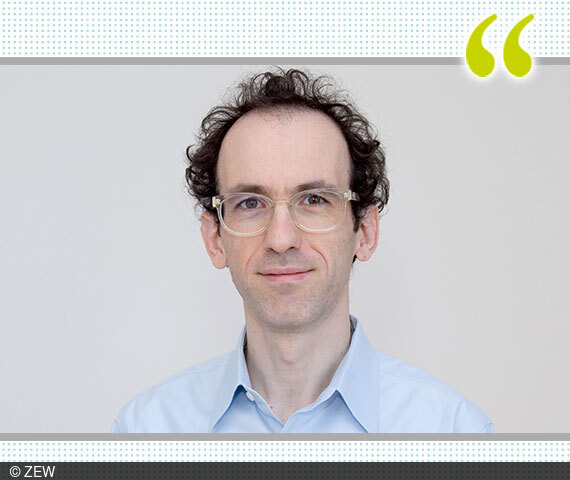Better Trade-Secret Protection Can Have Adverse Effects on the Common Good
Questions & AnswersQuestions and Answers with Dr. Bernhard Ganglmair
The ZEW Research Department “Economics of Innovation and Industrial Dynamics” recently created the Junior Research Group “Competition and Innovation” that studies the law and economics of competition and innovation.
Bernhard Ganglmair, who heads the group, talks with us about its research and sheds light on the potential applications. To better protect trade secrets Germany recently implemented an EU directive.
The new ZEW Junior Research Group studies the standardization and strengthening of trade-secret protections. Can you tell us more about this work?
Measures to improve and standardize the protection of in-ventions, information, and data aim at creating stronger incen-tives for R&D investment. But these measures can also have unintended consequences when they lead to more secrets and when companies decide not to disclose inventions, for instance, through patents. We use data from the US to examine the effect of trade-secret protections on invention disclosure and visibil-ity. Since the 1980s, individual US states have sought to stand-ardize the protection of trade secrets. Based on their experience, we have found that better protection leads to a decline in the number of patents, especially for processes. This, in turn, re-duces the amount of available public information about new inventions and delays or even prevents the development of new technologies that build on this information. We are using mod-el simulations to show that better protection of trade secrets can have adverse effects on overall welfare – namely when the negative consequences of decreased invention disclosure out-weigh the positive consequences (i.e. increased R&D incentiv-ization) of stronger trade-secret protection. This is particularly likely in industries where R&D is fairly profitable.
ZEW has accumulated enormous amounts of knowledge in innovation and patenting. A task of the Junior Research Group is to link this knowledge with issues in "classical" competition economics.
Is there a project that makes this link particularly clear?
In an ongoing project, we are examining the relationship between increased industry concentration and productivity growth. A central question here is the role of innovation. We want to understand how a decline in competition affects the incentive of companies to invest in cost-cutting production technologies. A drop in this kind of innovation would have a long-term effect on productivity growth. The question here is whether the connection exists and, if so, how important is it. The resources and expertise of the ZEW research unit will prove invaluable here, as will data collected at ZEW on the innovation activity of German companies. Another part of the project involves the use of theoretical models to explain the mechanisms underlying that relationship between industry concentration and productivity growth. The goal is to better understand causes and effects and arrive at new insights for possible policy measures.
What are the goals of the new Junior Research Group?
We want to sharpen our scientific profile since good competition policy advice comes from good scientific research. In addition, good policy advice requires an active exchange with economic policy-makers. The goal is to position ourselves at this juncture between research and competition policy advice. At ZEW, we want to become a reliable partner for competition economics. We want to contribute new know-how and give valuable input for the other research units. At the same time, our interdisciplinary outlook seeks to foster the close exchange between economists and legal experts, in particular through our involvement in the Leibniz ScienceCampus of the Mannheim Centre for Competition and Innovation, which ZEW founded in cooperation with the University of Mannheim.

